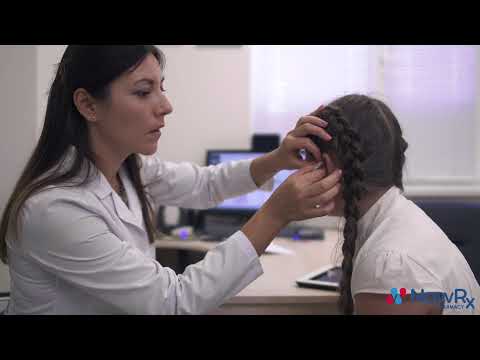The Difference Between a Clinical Medical Assistant and a Medical Assistant
Contents [show]
Clinical Medical assistants and Medical Assistants both work in the healthcare industry. But what’s the difference between the two?
Checkout this video:
What is a clinical medical assistant?
Clinical medical assistants work in outpatient facilities such as clinics and physician’s offices. They may also work in hospitals, but their duties would be limited to non-clinical tasks. The job duties of a clinical medical assistant include taking medical histories, measuring vital signs, administering injections and assist with minor office surgeries. A clinical medical assistant may also be responsible for scheduling appointments and updating patient files.
Medical assistants, on the other hand, have a more general job description. Medical assistants may work in a variety of settings, including hospitals, clinics and physician’s offices. Their duties vary depending on the workplace but can include everything from taking medical histories to scheduling appointments and billing insurance companies. In some states, medical assistants are allowed to perform basic lab tests and give injections.
What is a medical assistant?
A medical assistant is a multi-skilled professional who performs both administrative and clinical duties in support of a physician or other healthcare provider.
There are two types of medical assistants: clinical medical assistants and administrative medical assistants. Clinical medical assistants perform patient-care tasks such as taking medical histories and recording vital signs, measuring patients’ heights and weights, drawing blood, preparing patients for examination, assisting with minor office surgery, and applying bandages. Administrative medical assistants handle the business side of things, such as scheduling appointments, handling billing and insurance matters, handling correspondence, maintaining records, and ordering supplies.
Both types of medical assistants work under the supervision of a licensed physician or other healthcare provider. Many Medical Assistants have completed formal training programs that last anywhere from several months to two years; however, some states do not require formal training in order to work as a Medical Assistant.
The duties of a clinical medical assistant
Clinical medical assistants are an important part of the medical field. They provide support to doctors and nurses and help care for patients.
Clinical medical assistants typically have a wide range of duties, from taking patient medical histories and vital signs to preparing them for examination and performing basic laboratory tests. They also may give injections, apply dressings to wounds, assist with minor surgeries and take X-rays.
In larger medical practices or hospitals, clinical medical assistants often are responsible for scheduling appointments, handling insurance paperwork and billing patients.
The duties of a medical assistant
The duties of a medical assistant vary depending on their employer’s needs and their own qualifications, but they generally fall into one of two categories: clinical or administrative. Clinical medical assistants typically work in doctors’ offices and clinics, providing direct patient care. Their duties might include taking medical histories, checking patients’ vital signs, preparing them for examinations, and assisting the doctor during examinations. Administrative medical assistants handle the business side of things, such as scheduling appointments and handling billing and insurance paperwork.
The education of a clinical medical assistant
There are many differences between a clinical medical assistant and a medical assistant. One of the most important is the education. A clinical medical assistant has at least a 2 year degree, whereas a medical assistant only needs a certificate.
A clinical medical assistant also has more training in lab work and basic diagnostic procedures. They are able to take vitals and often times give injections. A CMA can also assist in minor surgery. Most of this training is completed during their academic schooling and internship hours.
Medical assistants generally have less patient interaction than clinical medical assistants. They mainly work behind the scenes, scheduling appointments, updating medical records and handling billing and insurance paperwork. Although they do not have as much direct patient contact, they still play an important role in the day-to-day operations of a doctor’s office or clinic.
The education of a medical assistant
The education of a medical assistant is one of the main differences between a clinical medical assistant and a medical assistant. A clinical medical assistant is someone who has completed a medical assisting program that has been accredited by the Commission on Accreditation of Allied Health Education Programs (CAAHEP) or the Accrediting Bureau of Health Education Schools (ABHES). These programs usually take about a year to complete and include both classroom and hands-on instruction. A medical assistant, on the other hand, may have received on-the-job training or no formal education at all.
The certification of a clinical medical assistant
The certification of a clinical medical assistant (CMA) is granted by the Certifying Board of the American Association of Medical Assistants (AAMA). A medical assistant (MA) is not certified by the AAMA.
The CMA credential signifies that the holder has met the standards for excellence as set forth by the AAMA and has agreed to uphold these standards throughout his or her career. The CMA credential is recognized nationwide as a sign of quality in medical assisting.
To earn the CMA credential, an individual must:
– Successfully complete an accredited medical assisting program that includes both classroom and clinical instruction and has been accredited by either the Commission on Accreditation of Allied Health Education Programs (CAAHEP) or the Accrediting Bureau of Health Education Schools (ABHES).
– Pass a nationally standardized, multiple-choice examination administered by computer at approved testing centers.
The certification of a medical assistant
There are two main types of medical assistants: clinical medical assistants and administrative medical assistants. Clinical medical assistants take on more patient care duties, while administrative medical assistants handle more of the business side of things.
Both types of medical assistants need to be certified. To become a certified clinical medical assistant (CCMA), you must pass the Certified Clinical Medical Assistant Exam (CCMAE) administered by the National Healthcare Association (NHA). To become a certified administrative medical assistant (CAMA), you must pass the Certified Administrative Medical Assistant Exam (CAMAE) administered by the American Association of Medical Assistants (AAMA).
The salary of a clinical medical assistant
Clinical medical assistants earn slightly more than medical assistants, on average. The median salary for a clinical medical assistant is $33,610 per year, compared to $32,480 for a medical assistant. However, salaries can vary widely depending on experience, location and other factors.
The salary of a medical assistant
Medical assistants are in demand. The Bureau of Labor Statistics projects an employment growth of 23 percent for medical assistants between 2016 and 2026, much faster than the average for all occupations.1 With a median pay of $16.17 per hour in 2017,2 medical assistants also earn a solid wage. But how does that compare to other health care roles? Here’s a look at the median annual salaries for some common positions in the medical field, according to the Bureau of Labor Statistics:3
-Medical assistants: $31,540
-Clinical medical assistants: $33,610
-Nurses: $70,000
-Physicians and surgeons: $208,000







